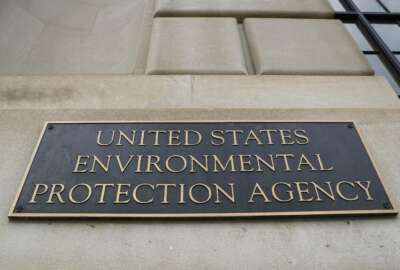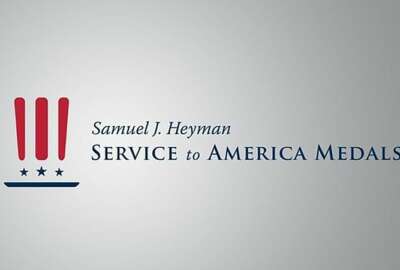
How the EPA funneled enforcement into a difficult-to-reach part of the country
Region Six of the EPA encompasses 15% of the U.S. land area. But it accounts for 25% of enforcement actions by the EPA. The region covers five states and 66 tribal...
Region Six of the EPA encompasses 15% of the U.S. land area. But it accounts for 25% of enforcement actions by the EPA. The region covers five states and 66 tribal nations. It also includes many oil and gas fields, chemical plants, and paper factories. Federal Drive with Tom Temin‘s guest helped helped drive much of the enforcement activity. Now she’s a finalist in this year’s Service to America Medals program. She’s Cheryl Seager, EPA’s Region Six director of Enforcement, Compliance and Assurance.
Interview Transcript:
Tom Temin Well, you have got a lot of enforcement going on. Tell us how enforcement works at the EPA, briefly, I mean, there is reporting by regulated entities. And if something in the reports is not right, then enforcement comes in?
Cheryl Seager Pretty much. Much of what EPA does is generated by self-reporting, but also citizen complaints, also referrals from the state and then our inspection. So sometimes we have our list of inspections that we’re going to do for the year. And sometimes we also have citizens complaints that come in and based on that will also go out, do more inspections. So, yes, basically, from whatever mechanism it comes through, we’ll do more review and then consult with the violator and then potentially take an enforcement action.
Tom Temin And the region you’re dealing with includes Texas and New Mexico. And those are two of the largest states by land area, Arkansas, Louisiana, Oklahoma, and again, as we mentioned, these 66 tribal nations. Is there anything in that region that sort of has in common among those areas that would call for increased scrutiny and enforcement?
Cheryl Seager Well, I think there’s really a large amount of oil and gas activity throughout the region. I mean, most of it centered in Oklahoma, Texas and New Mexico. But the other states have some as well. The other thing that is very prevalent in the region is the amount of industrial activity in really that’s focused more on Louisiana and Texas, but a large amount of work that goes on in those areas.
Tom Temin All right. And so what was the issue, it sounds like in the documents for your Sammies Medal finalist, that there wasn’t enough enforcement going on in those regions? Again, a large area, a lot of rural areas. What was the issue?
Cheryl Seager Well, as I tell new hires coming into our enforcement division, there’s no lack of opportunity in Region Six because unfortunately, we have everything here. And so part of the issue was with so much oil and gas activity going on, how do you cover it all? And then the other issue that really became more in the forefront in the last couple of years has been the amount of overburdened communities in the area. So there was sort of a dual enforcement aspect of things going on.
Tom Temin Could some of these areas be likened to, just to make an analogy, Palestine, Ohio? Where this train caused that horrible environmental disaster, but there’s not much local resource to deal with it. Is that kind of what happens in these areas?
Cheryl Seager That’s right. What happened in Palestine was in a very rural area. And again, like you said, not the really the ability to deal with it quickly and efficiently as one might hope. What we have in Region Six is the unfortunately the possibility of accidents like Palestine occurring on a more wide scale framework. And part of that is because of the amount of industry that’s in the area. So every year we have a number of explosions that happen at facilities and sometimes it’s just somebody did something wrong, but sometimes it’s an act of nature or sometimes it’s just equipment failed. It isn’t always attributable to a specific person doing something wrong. Sometimes it’s just an accident. Nonetheless, we have to go to look at that and take enforcement action. Unfortunately, almost every year we have at least one or two deaths from some kind of an explosion that occurs or some kind of an accident that occurs at a facility. So unfortunately, we have the possibility of it happening on a wider scale, but not necessarily with the impact that Palestine had where it contaminates the large area that Palestine did.
Tom Temin Sure. We’re speaking with Cheryl Seager. She is the director of enforcement, compliance and assurance for Region Six of the EPA. She’s also a finalist in this year’s Service to America Medals Program. And I was wondering, do you ever get tips from other federal agencies? For example, suppose OSHA goes in to look at a place and they say, well, we found them okay with respect to worker safety, but it really stunk in there. There might be something you guys need to look at.
Cheryl Seager Yes, that definitely happens. One of the groups that we work a lot with is the Coast Guard, work with the off shore agencies. But yes, sometimes another agency can make a referral to us and say something just doesn’t seem right. Can you guys go out and look at it?
Tom Temin All right so tell us what you did. It says, I’m just reading your citation, and the Region Six administrator said your transformational leadership has elevated the status of environmental enforcement to both reduce pollution and promote environmental justice. What have you done over these many years?
Cheryl Seager Well, one of the things that we’ve done, and this is really more in the oil and gas area, and so this has more of an impact on the climate change side of things. But is doing these flyovers over the oil and gas sites in mostly Texas and New Mexico, because they’re very large landmass scales of where there’s a lot of oil and gas activity going on. And we just don’t have the staff to go out there and inspect every one of these sites. We’d just never catch up. And so what we had started doing several years ago and have just increased every year is doing flyovers. So we have helicopters that use infrared cameras and scanners, and they can create images of basically leaks from these oil and gas sites. And so we’re able to get the data from the hot flyovers, analyze that, and then potentially take enforcement actions on that. And as we started out doing it, we really were in a mind frame of sort of a find and fix mind frame, right. Where we would notify a facility that there was a violation or a potential violation would call them in which show them our evidence and say, get it fixed on a time frame, certify to us that you’ve done it and we’d move on. But as we have been doing this over the past several years, we found that there are more and more repeat violators, there are more egregious violators. And so what we’ve done is started taking enforcement actions where there would actually be injunctive relief, where they actually fix the problem. But then also there’s a penalty associated with it.
Tom Temin You might notice, say, a valve somewhere far away from the factory headquarters that’s leaking. And if they don’t fix it, then this is what happens. But they get a chance to fix it without a penalty the first time.
Cheryl Seager Right. And these are unmanned oil and gas sites out in like in the Permian Basin, the San Juan basin, Eagle Ford Shale, they’re in that area. So they’re unmanned, but there’s a lot of them. And so we’ve been able to cover just so much more landmass than we would have been able to cover if we sent somebody out in a truck with a handheld monitoring device. So over the past five years or so, we’ve had 62 settlements that have addressed violations at over 240 oil and gas facilities. So it’s really had an impact on the pounds of emissions that are coming off of these sites.
Tom Temin And what about complaints from local residents sometimes, again, if if something is leaking in Manhattan? There’s 75 lawyers that’ll join a lawsuit the next day and you’ll have community activists and all this kind of stuff happen. The members of Congress will join in. Out there in the Permian Basin or in the sticks of Louisiana, people maybe don’t feel quite as empowered to take on a polluter and petition the government. How does that work? How can you improve that?
Cheryl Seager Well, in the basins where we’ve done a lot of work, those sites tend to be more remote. So you don’t get the community complaints that you might get in other areas. What we decided to do a couple of years ago in Louisiana was because of a lot of the regulated industrial activity there, and there’s just so much of it, and we have a problem of being understaffed over the last several years. We did flyovers over the chemical facilities there. What we were able to do is look at the areas where both EPA and the state were getting the most types of complaints that might be addressed by a flyover type activity. And so we were able to look at that and target those areas for a round of fly overs. And we’ve just started to have that data. We finished the analytical process with that and we’ve started contacting the companies that were found to be potentially violating and we’re starting to have discussions with them and we’ll start our enforcement actions in that area.
Tom Temin So from a chemical or spectra graphic sense, if someone can smell it, you can probably see it from aircraft.
Cheryl Seager Right. If you see the plume, like that’s what you’ll usually see in these infrared camera videos. You’ll see it looks like smoke coming maybe from a tank or a unit within the industrial facility. And you can see it from there. And then you start looking backwards and see, okay, like where’s it coming from, what’s the potential problem? And analyze that and then take the next steps.
Tom Temin And did EPA have to hire pilots and aircraft and so forth, or did you contract this out? How does that work?
Cheryl Seager We contract it out. We use some of our money that we get every year from our headquarters and the use and inspections and technical support and all that. We yeah, we have a contract with the pilots that do it.
Tom Temin Got it. And have you been on any of the flights to see the plumes in infrared yourself?
Cheryl Seager I have not. I’m not a helicopter person.
Copyright © 2025 Federal News Network. All rights reserved. This website is not intended for users located within the European Economic Area.
Tom Temin is host of the Federal Drive and has been providing insight on federal technology and management issues for more than 30 years.
Follow @tteminWFED




